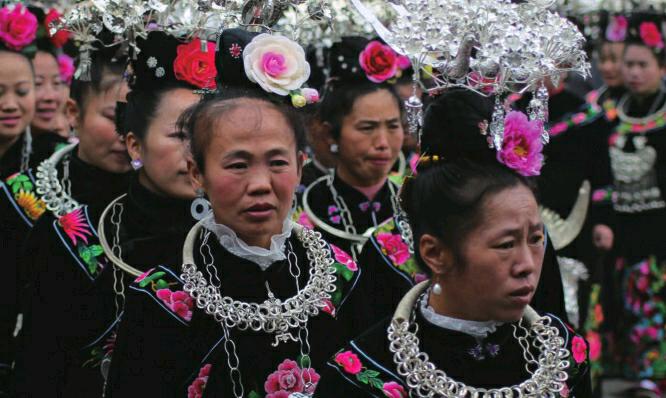A World of Difference
2018-01-09ByLaurenceCoulton
By+Laurence+Coulton
One of the great foreign misconceptions about China is its homogeneity. The idea that Chinas vast lands are populated by nearly 1.4 billion members of an identical culture, that there is somehow an archetypal Chinese landscape, a Chinese person, or that spoken Chinese is a singular language, rather than a family of languages at least comparable to that of the entire European continent, are all at times prevalent concepts in the West. Despite having encountered China in an academic sense at university, I myself arrived in the country for the fi rst time in 2013 with many of these ideas intact. China, in fact, contains a world of diversity squeezed between the mountains in the west and the sea to the east, and discovering this multitude of culture, landscape and tradition is what has kept me coming back for more.
My home country, England, is certainly diverse in a modern sense, and its population is often rightly celebrated for being multicultural, but it is Chinas ancient, deep-rooted diversity which attracts so many outsiders like me to the country. I have lived in northern and southern Chinese cities separated by thousands of miles, the food, the people, and the language all tangibly shaped by the historical and geographic forces of their respective regions. The fl owing, musical tones of the Cantonese language seem to almost replicate the languid subtropical humidity of Guangdong Province, whilst the robust infl ection of many Beijing speakers exudes an authority which at once brings to mind the cultural richness of Chinas imperial capital. Peoples beliefs, traditions and lifestyles are shaped by the geographic spaces they occupy, and the extremes of Chinas landscape are to be credited with the variety of culture to be found there.
It is remoteness and, until grand infrastructure projects transformed much of the province in recent years, the inaccessibility of Guizhou Provinces interior that give rise to the uniqueness of Miao culture. Protected from the homogenizing forces of history by lush mountains, these natural fortifications leave us today with the silver headdresses, embroidered black gowns and reed flutes admired in museums and cultural centers from Guiyang to Shanghai. In the traditional handicraft of Yunnans Bai people, the pattern of the sky reflected in the waters of nearby Erhai Lake is reproduced in the swirling blue and white symmetry of their famous tie-dye fabrics, a literal illustration of the local geography permeating the culture. Across the arid northwest, the history of the Silk Road is visible in many aspects of cuisine, religion, and dialect, all of which seem at fi rst more familiar to the Islamic world, vestiges of cultural interactions that took place centuries ago on these ancient routes of exchange. Once maritime commerce replaced that on land, distance and desert shielded these places from the historical forces of acculturation, and when visiting Chinas most westerly cities today it can feel like months, not centuries, since Marco Polo was there, writing about what he saw.endprint
Yet throughout China there can be found rich veins of consistency, concurrent ideas and traditions, which unite the vast and diverse elements of this country into a national whole. From Shenzhen to Urumqi people are proud to share and discuss Chinas long and fascinating history, alike in their view of themselves as the constituent parts of a wider Chinese civilization. The character fu—meaning good fortune, happiness, or luck—appears on the doorways of small wooden villages in the hills of Guangxi Zhuang Autonomous Region as well as patterning the upholstery of taxi seats in Chengdu, whilst the silver crescent moons which adorn mosques in Ningxia Hui Autonomous Region and Gansu Province reach up from roofs undeniably Chinese in their architectural design, a display of cultural syncretism underlined by a prevailing Chinese essence which can be found across Chinas society.
In reference to its size, China is sometimes hyperbolically referred to in the West as a continent rather than a country, although the term subcontinent might in fact be more exact. Like a subcontinent, it contains the breadth of culture, language, cuisine and landscape one would expect to find there, whilst also exhibiting a national togetherness that one might not. There is a lot about China that is unknown to most living in Europe and North America, in contrast to the often nuanced understanding of the West displayed by many Chinese, and this lack of knowledge makes China an exhilarating place for Westerners to visit or live. Yet we would do wrong to celebrate ignorance, and if we are to facilitate a future in which both of our peoples prosper then, at the very least, our stereotypes of China must be discarded and replaced by something more meaningful. It is diversity that makes China unique, but it is unity that makes it strong.endprint
